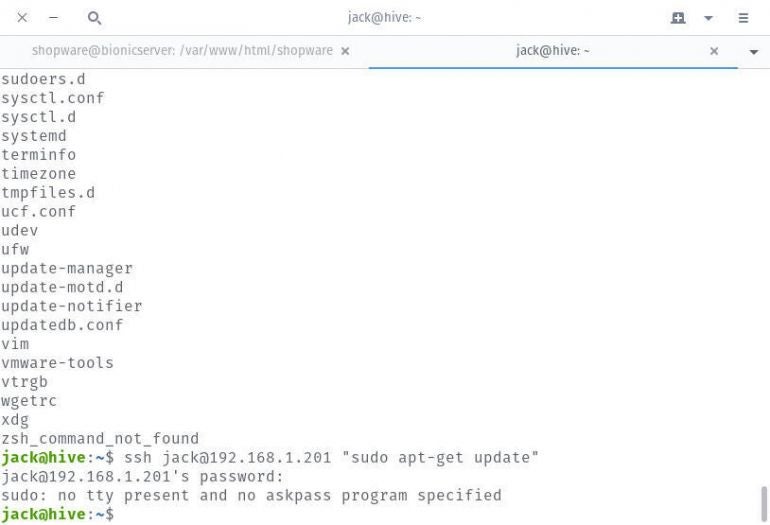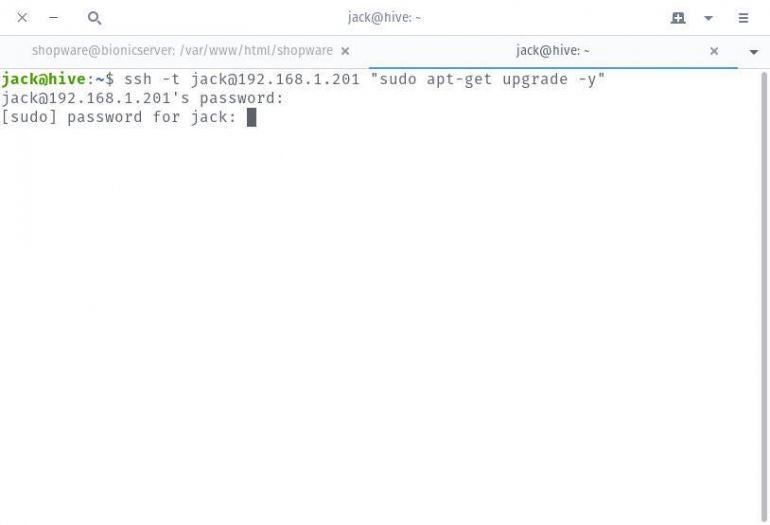Safe Shell incorporates many methods, a lot of which might make your administrator’s life exponentially simpler. One such trick is the power to run instructions on distant servers, with out logging in.
Positive, you may take the time to log into the server, run the command, and sign off, however why not simply do it multi functional fell swoop? It isn’t solely helpful, it is fairly simple.
SEE: High Instructions Linux Admins Ought to Know (TechRepublic Premium)
What you want
The one factor you want for that is two extra Linux machines, together with the openssh server operating (and accepting connections). You are able to do this from the default repositories if you do not have the SSH daemon put in. For instance, on the Ubuntu Server platform, the command to put in the SSH daemon is:
sudo apt-get set up openssh-server -y
As soon as put in, you will wish to allow the server with the instructions:
sudo systemctl begin sshdsudo systemctl allow sshd
Word that on Ubuntu techniques the service for the OpenSSH server is known as ssh, not sshd. Subsequently, the instructions to begin and allow the SSH server will likely be:
sudo systemctl begin sshsudo systemctl allow ssh
Now that you’ve the SSH daemon in your distant servers, you may ship instructions to them. Let’s learn the way.
SEE: Easy methods to View Your SSH Keys in Linux, macOS, and Home windows (TechRepublic)
Run a fundamental command
Let’s get an inventory of recordsdata on a distant /and many others listing. To do that, the command is:
ssh USER@SERVER_IP "ls /and many others"
The place USER is a distant username, and SERVER_IP is the IP handle of the distant server. After you have efficiently entered the distant consumer’s password, you’ll get a list of the /and many others/ listing on the distant server.
Straightforward.
SEE: Easy methods to shortly grant customers sudo privileges in Linux (TechRepublic)
Run a command that requires sudo
However what if it’s essential to run a command that requires sudo privileges on a distant server? When you do, you will note a tty error.

How do you get round it? Thankfully, there’s a small swap you may add to the command. Mentioned swap is -t. What do you do? This forces pseudo-terminal allocation, so ssh has no concept that it does not have a neighborhood terminal to make use of.
So, to run a distant command, through ssh, which requires sudo privileges, the ssh command appears like this:
ssh -t USER@SERVER_IP "sudo COMMAND"
Say, for instance, you need the consumer interface to improve a distant server at 192.168.1.201. This task is:
ssh -t [email protected] "sudo apt-get improve -y"
You’ll first be prompted for the consumer’s password for the SSH connection, adopted by a second request for the consumer’s password for sudo privileges.

The command will run as if it was executed on the native machine (solely it runs on the distant machine). When the command is full, you’ll return to the native message, able to proceed working.
And that is all there may be to operating instructions that require sudo privileges on a distant machine, through SSH.
This text was initially revealed in July 2019. It was up to date in January 2025 by Antony Peyton.
————————
BSB UNIVERSITY – AISKILLSOURCE.COM